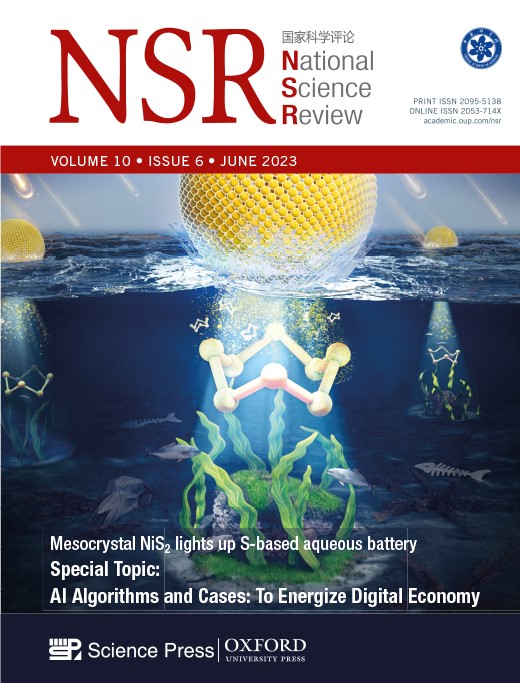Targeted imaging of lysosomal zinc ions with a tetrahedral DNA framework fluorescent reporter
IF 16.3
1区 综合性期刊
Q1 MULTIDISCIPLINARY SCIENCES
引用次数: 0
Abstract
Abnormal levels of zinc ions within endo-lysosomes have been implicated with the progression of Alzheimer's disease (AD), yet the detection of low-concentration zinc ions at the organelles levels remains challenging. Here we report the design of an endo-lysosome-targeted fluorescent reporter, Znluorly, for imaging endogenous zinc ions. Znluorly is constructed from an amphiphilic DNA framework (DNF) with programmable size and shape, which can encapsulate zinc-responsive fluorophores within its hydrophobic nanocavity. We find that the tetrahedral DNFs of 20-bp in the edge length are effectively located within endo-lysosomes, which can detect zinc ions with a detection limit of ∼31.9 nM, (a sensitivity improvement of ∼2.5 times compared to the free fluorophore). Given the organelle-targeting ability and high zinc sensitivity of Znluorly, we employ it to detect endogenous endo-lysosomal zinc ions in neuron cells. We monitor the dynamics of zinc levels in AD model cells and zebrafish, corroborating the positive correlation between zinc levels and AD hallmarks including Aβ aggregates and learning/memory impairments. Our study provides a generalizable strategy for organelle-specific theranostic applications.利用四面体 DNA 框架荧光报告器对溶酶体锌离子进行靶向成像
内溶酶体中锌离子水平的异常与阿尔茨海默病(AD)的进展有关联,但在细胞器水平检测低浓度锌离子仍具有挑战性。在此,我们报告了一种内溶酶体靶向荧光报告物 Znluorly 的设计,该报告物可对内源性锌离子进行成像。Znluorly 由可编程大小和形状的两亲 DNA 框架(DNF)构建而成,可在其疏水纳米腔内封装锌响应荧光团。我们发现,边长为 20-bp 的四面体 DNF 能有效地定位于内溶酶体中,从而检测锌离子,其检测限为 31.9 nM(与游离荧光团相比,灵敏度提高了 2.5 倍)。鉴于 Znluorly 的细胞器靶向能力和对锌的高灵敏度,我们利用它来检测神经元细胞中的内源性溶酶体锌离子。我们监测了AD模型细胞和斑马鱼体内锌水平的动态变化,证实了锌水平与AD特征(包括Aβ聚集和学习/记忆障碍)之间的正相关性。我们的研究为细胞器特异性治疗应用提供了一种可推广的策略。
本文章由计算机程序翻译,如有差异,请以英文原文为准。
求助全文
约1分钟内获得全文
求助全文
来源期刊

National Science Review
MULTIDISCIPLINARY SCIENCES-
CiteScore
24.10
自引率
1.90%
发文量
249
审稿时长
13 weeks
期刊介绍:
National Science Review (NSR; ISSN abbreviation: Natl. Sci. Rev.) is an English-language peer-reviewed multidisciplinary open-access scientific journal published by Oxford University Press under the auspices of the Chinese Academy of Sciences.According to Journal Citation Reports, its 2021 impact factor was 23.178.
National Science Review publishes both review articles and perspectives as well as original research in the form of brief communications and research articles.
 求助内容:
求助内容: 应助结果提醒方式:
应助结果提醒方式:


